|
A city official said something to me a while back that got stuck in my head and has rolled around inside my skull like a rock for months. We were talking about the programs and services of the No Kill Equation which I view as the DIY solution to end the needless destruction of shelter animals. As I have written about many times, the genius of the Equation developed by Nathan Winograd almost 20 years ago is that it can be molded and shaped to fit the resources in, and challenges of, any community. We do not need Nathan to travel to every community to help elected officials change the culture in their tax funded shelters. Interacting with progressive shelters to learn from their methods certainly helps, but examination of each element of the Equation to determine how that element can be implemented in the community is the first proactive step towards animal shelter reform. The city official said that he had kept all of the materials we had provided to him years ago about the No Kill Equation with the exception of the publication which talks about how No Kill animal sheltering is cost effective. He said, “I threw that one away years ago because it’s bullshit.” We were taken aback by his comment which probably made sense to him considering how much money had been spent on the shelter operation in recent years. The city had almost doubled the staff from the number of positions that existed when we began our advocacy a decade ago. The city had also spent close to 3 million dollars to renovate the shelter. Our response to him was that having more paid employees was not as important as supervision of those employees and the tasks they perform. We withheld our comments about the renovation of the building because most of the work was completed and us stating we thought money had been wasted would not have advanced the conversation in positive ways. As a resident of Alabama, I do not lack for bad examples about which to write related to animal sheltering. Recent events related to the shelter that spent 3 million dollars on renovations and another shelter building that will soon be constructed reminded me about that rock rolling around in my head related to how money is spent related to shelter animals. This subject is separate from the subject about why saving lives using the No Kill Equation does not cost more about which I will write in the future. What The City Did It’s a given that many municipal shelters currently in operation were built years ago. Most were built to house animals temporarily as part of what we call catch and kill operations in which animals are housed for a limited period of time and are then destroyed. In many cases, it is a “first in, first out” method of operation. There is absolutely nothing wrong with a municipality or community building a new animal shelter that is more suited to progressive operations or renovating an existing shelter for the sake of modernization. Lake County, Florida, became a No Kill Community under the leadership of the county commission and at a time when the shelter was little more than a glorified pole barn. The county now has a new shelter of which it is proud as the county continues to lead the way in No Kill sheltering operation nationally. But some shelter spending is not only unnecessary, it is wasteful. The shelter about which I (and other members of an advocacy group) met with the city official spent a million dollars to renovate the dog kennel area of the shelter. Additional kennels were constructed. The design is a double kennel for each dog; there are two kennel areas separated by a door that can be opened and closed by the staff. As a result of this renovation, the number of kennels in the shelter was actually reduced by 14 kennels. When the city announced the renovations to the community, it touted the changes as improving quality of life for dogs and making them happier. In one media report, it was said the dogs would be “stress free” (a claim we found absurd). The fact that it would easier for staff to clean the kennels was an added benefit to the double kennel construction. The kennel renovation project was completed approximately three years ago, at a time when the dog live release rate at the shelter was 93%. As of the end of 2022, the dog live release rate had dropped to 87%. In 2022, almost four times as many dogs were destroyed for behavior as were destroyed in 2021 (which is almost as many dogs destroyed for behavior in 2019, 2020 and 2021 combined). So much for improved quality of life for dogs who would be happier and less stressed. Most of the dogs destroyed are very young; their brain development and hormones make them ill-equipped to handle the stressors of the shelter environment. What the City Should Have Done (and still can do) As I have marveled at the million spent by the city to renovate the dog kennels (without any apparent positive result) it made me think of how a fraction of that million dollars could have been spent. The shelter sits on a parcel owned by the city. There is a 10-acre rectangular-shaped rural parcel to the south of the shelter which is owned by the city and has been undeveloped for years. The city could easily have cleared an area in the middle of the parcel to construct 2 covered, outdoor kennel structures like the one built in a neighboring county which houses 30 dogs and which is protected by the weather using the same industrial curtains used in the local livestock industry and which roll up and down. The kennels could have been built from north to south and been surrounded by a simple cleared walking path for staff and volunteers to walk dogs during the day in a forest-like setting. At least some of the dogs housed in the shelter all the time could instead be housed outside during the day to provide them with fresh air and the mental stimulation of nature while avoiding the stress that comes from housing them in brick walled kennels inside the shelter. Total cost? Less than 200k for the buildings plus the cost of clearing an oval dirt walking path. For those who object to housing dogs outside, this would be housing during the day for the most part and many of the dogs who end up in the shelter either live outside or spend a lot of time outside unsupervised, which is how they end up at the shelter. And for those who believe outdoor kenneling during the day would require more staff, consider the fact that the staff has already doubled in the last ten years. This is not about more staff; it is (again) about how those people are utilized. The city has already spent the million and more dogs are being destroyed now for behavior than at any time in the last eight years. Now is the time for the City to acknowledge that the spending benefited the staff by making the kennels easier to clean, but did not benefit the dogs. Considering how little it would cost to provide outdoor facilities to house dogs during the day, there is no reason the city cannot consider the outdoor kennel plan for the future. It is also long past time for the city to fully embrace the No Kill Equation and embrace recommendations made over a period of almost a decade to make the shelter hours more family friendly to remove barriers to reclaims and adoptions, to do community outreach to the areas in the city where most dog intake comes from (which is tracked on a map) to reduce that intake do more resource counseling to help people keep pets in existing homes and recognize that the sharp rise in the number of dogs destroyed for behavior is a situation of the city's making which could be avoided by accepting free help from subject matter experts and by changing the approach to dogs who do poorly in the shelter environment. What The County is Doing The county in which I live has never had an animal shelter even though one is required by state law. For years, the county got around the statute by housing impounded dogs at a veterinary clinic for a rate of $10 per dog per day. I tried to get local elected officials to pool funds to have a metro animal shelter to serve the county and all the cities in the county so people only have to go to one place to find a lost pet instead of doing to five places. I failed. When the county finally began making plans for its own facility before the pandemic, I met with elected officials to talk about how the facility would be operated as I again promoted the No Kill Equation. The drawings I was shown to renovate an old building the county had purchased had way too many kennels for the annual intake by the county and I said as much. I also implored the county to get help on how to run a new facility from a subject matter expert for which I offered to raise money to cover part of the cost. The answer was no. The commission chairman was proud of what he called the “No Kill” status of the county, said he did not plan to run for election again and that he considered the new shelter to be part of his legacy in the county. Fast forward three years. The county continued to kennel dogs in the old building which has still not been renovated. It has also been kenneling dogs at a new location (this time a boarding facility) again at a rate of $10 per dog per day. I am told 30 to 40 dogs are housed this way and have been for months. The county has likely spent 100k in the last year just for that long-term boarding (which one elected official called “dog storage”), a situation which cannot be sustained financially. Because county officials say the unchecked spending has to stop, it has decided that any dog in the system 60 days will be destroyed beginning in May, regardless of the health status of the dog. I was told recently that the county will start with the dog who has been in the county system the longest which I’m told is 2 years. To be clear, keeping animals alive is not No Kill and never has been. I am not sure who is responsible for the decision to board dogs long-term but the consequences of that are obvious. Not only is that arrangement not financially sustainable, it creates behavior issues for those dogs, it prevents families from finding their lost dog and it prevents dogs from being adopted by the public. For shame. I am also told the county has committed to spending more than 600k in COVID Relief funds to create a building that is primarily for administrative purposes with some housing for cats but no kennels for dogs. One elected official told me the focus of the building is more about people than about animals. When I asked about the plan to kennel dogs, he could not answer. What The County Should Do
The county intends to spend more than half a million dollars of COVID Relief money on shelter operations. Reserving my personal opinions about the appropriateness of that spending, the money is available for use. I can envision no scenario in which it is appropriate to spend more than half a million dollars on a building that has very little to do with animals and nothing to do with the types of animals that make up the majority of the county’s shelter intake: dogs. So what should the county do with that money? It’s a lot of money and the opportunities are endless. If I was an elected official in the county, these would be my recommendations:
Beyond the spending, the county should also stop using the phrase “No Kill” to mean “we are keeping animals alive.” County officials should learn about the programs and services of the No Kill Equation to help reduce shelter intake and increase shelter output moving forward so it is never in a position in which elected officials sees a mass euthanasia event as the only way to resolve problems of its own making. I have extended an offer to my county commissioner and the animal control officer to begin their education about the No Kill Equation. Time will tell if they are willing to break away from the status quo and mistakes of the past to seek a better future for the residents of the county and the animals with whom they share their lives.
0 Comments
As we reach the end of another year I am taking stock, as do many people. I don't make resolutions for the New Year, per se. When it comes to my animal welfare advocacy, I take an inventory of sorts as I look back at the good, bad, tragic, triumphant, unfortunate and avoidable. As we head into 2023, I have decided to do my best to help those advocates who are willing to help themselves. I am contacted daily by people who want help. Some want to know to report a puppy mill. Some need help placing an animal or finding a lost pet. Some are not sure what to do with a situation about animal abuse or neglect. Some have an issue in their area with someone trying to eradicate community cats and they want to stop that. Some seek help related to No Kill animal shelter advocacy. You get the idea. The subjects vary greatly. I can often provide people help quickly by referring them to a page on my website, to a blog I've written, to another organization or to a subject matter expert. I am happy to help when I can and within the scope of my knowledge base. I often engage with fellow advocates like me who are looking to affect change in their own areas related to the operation of the tax-funded animal shelter. I do not provide consulting services and I do not do boots on the ground work in those places. I work a full-time job in the legal field, manage three websites, lead a No Kill political advocacy group in my area and participate in a No Kill coalition of fellow advocates who try to help other advocates across the country (we are unfunded and are all active in advocacy in our own communities). I have a family which is my priority, as it should be for all of us. I know some situations are just beyond my ability to help anyone. I cannot help someone fix all that is broken with animal shelter systems in large cities in which millions of dollars are in play like Los Angeles, Chicago, Atlanta, New York, Houston or Miami. When shelters in huge cities are regressive and there are likely to be contract issues, there can numerous layers to that dysfunction which has often been calcified over the years. When we are talking about a city or county level for small to medium sized municipalities, I can ordinarily help with that. I have engaged with advocates in numerous states and often engage with elected officials in those states to help them understand what the phrase "No Kill" means, to learn about the No Kill Equation and to share what has worked well (and has not worked well) in my area. At the heart of every conversation, be it by telephone, email or video chat is education. Just like I had to educate myself in order to become a more effective advocate, people who are seeking change in their own areas must advance their own education in order to be the change they seek where they live. There is no shortcut to change and we all have to pay the price by spending time to become informed on the subjects about which we advocate. With very few exceptions, there is no person or organization that will come to your community and fix it for you. There are large organizations that promote ideas, blog, hold seminars and have state representatives who perform a variety of functions. They do not ordinarily address issues in specific cities or counties on a large scale. There are also consulting groups which provide help related to animal shelter reform on a paid basis, not all of which are created equal. For the most part, change begins with all of us in our own backyards. I was recently reminded of a blog from 2011 written by a fellow advocate in which she made a reference to a famous line from a sitcom from years back. Shirley Marsh of Yes Biscuit wrote a wonderful blog called "I Can't Save Every Pet at Your Local Shelter, But I Know Who Can." I often call this the "no soup" blog. I've shared it countless times and Shirley was gracious enough to allow me to include the following quote in my book: In reality, [animal shelter reform] takes a group of dedicated animal advocates willing to stir things up in their own community by challenging the status quo and refusing to accept killing as a means of population control. There are consequences to such actions: old friendships may be broken, egos may be bruised, glass houses may be shattered. This ain’t no fairy tale. It’s hard work, which will be met with resistance by some. You will no longer be able to ride the I Love Everybody and Everybody Loves Me bus. You will not be nominated for homecoming queen. No soup for you. Like all things in life, working to end the killing in your community is a choice you must make for yourself. You can choose to carry on with the ‘save a few and kill the rest’ status quo. You’ll get to keep all your Facebook friends and play Farmville with them in between posting pets from kill lists. Or you can choose to reject the idea of needless killing as justifiable in any way. You’ll make some people feel uncomfortable, and they will resent you for it. But you’ll have the opportunity to educate and learn from others who are on the same path. No longer will you feel an awkward compulsion to defend those who kill friendly pets in shelters while simultaneously advocating to save shelter pets. You will have the clarity of mind that comes from knowing where you stand.” Shirley used Seinfeld. I use The Wizard of Oz. If you want to get to the Land of Oz (create a No Kill community where you live), I can do my best impression of a member of the Lollipop Guild as I grimace and kick my feet (to show my conviction) and encourage you to "follow the yellow brick road" (by following the programs and services of the No Kill Equation). I can explain the journey in general terms and wish you the best, warning you to BOLO for that green witch and her flying monkeys (the opposition to animal shelter reform) hoping you reach Oz and find all you seek. But I cannot make the journey for you. That task is yours and yours alone. Each community is different. If a person or people in a particular community want change, they know best what resources exist in the community as well as what challenges exist there. Only people who live in the community can become truly politically active in that community to seek shelter reform by engaging with their own elected officials, with community stakeholders and the with the animal loving public. The genius of the No Kill Equation is that it can be molded and shaped to fit any community. By the people who live and work there. If you contact me in 2023 seeking help to make yours a No Kill community, I will do my best to help you provided you are willing to help yourself. I will ask you watch the 27-minute video you see below about the No Kill Equation. I will implore you to read Nathan Winograd's book, "Redemption: The Myth of Pet Overpopulation and the No Kill Revolution in America." I will ask you to consider reading my book if I think it will help you. I may refer you to pamphlets available on the No Kill Advocacy Center website to read to further your education. If you are willing to do those things, you will be well on your way to being educated enough on the subject to talk about it, educate others about it and persuade them that your community can, and should, become a No Kill community. I truly believe a time will come when all tax-funded animal shelters are No Kill shelters. How quickly we get there is up to all of us and how well we educate ourselves and those around us. As is the case with many of my blogs, local events prompted this one. I talk to some great folks across the country doing all they call to learn and to affect change. I had the misfortune of trying to help someone recently whose issues were well beyond by ability to help at all. I was not able to provide the guidance or help that person expected. Rather than thank me and move on, she chose to harass me and threaten me. At one point she created a recording in which she said she wanted "something meaningful." She did not want to be told to read another pamphlet or write a letter in the age of technology. She thought I had single-handedly brought reform to the entire state of Louisiana; I've driven through Shreveport four times, but that's the extent of my exposure to the Pelican state. She also thought it was the role of Nathan Winograd to get personally involved in her community, file a Section 1983 lawsuit on her behalf and spend time fixing what is broken because she just did not have the time. It got to the point that I had to block her on Facebook and block her phone number. As unhinged as she was, I realize it may have been due to frustration. I get it. But here's the deal, as we used to say in the Army. If you ask someone for help and they cannot help you, do not then turn your rage to the person you approached for help. Move along. All our lives are too short to expend time and energy in ways that are counterproductive to our values and goals. There may be someone else you can help you, but you have to own your outrage, put in the time yourself and not expect someone else to create your own future for you.
My book about our advocacy in Huntsville, Alabama, is priced to print on Amazon (which means no money is being made). I often blog here about No Kill advocacy and philosophies and I am active on Facebook, at least for now. You are welcome to contact me. If I can help you, I will. Countless people have helped in the the last two decades of my advocacy and I know that individual folks "in the weeds" like me have to help each other whenever we can. In one city, cats and kittens who are not adopted or removed from the animal shelter by a rescue group in a week are destroyed. In another city, the shelter adopts out cats, has a barn cat/working cat program, seeks foster homes for cats who have just given birth (and their kittens) and seeks bottle feeders for kittens with no mother. In one city, a dog who is fearful in the shelter environment and cowers in his kennel is destroyed for failure to make eye contact. In another city, a fearful dog who cannot be touched is provided with a bed, a blanket, toys and is slowly fed pieces of hot dog by employees and volunteers to earn his trust and help alleviate his fear so he can be adopted or placed in a foster home. In one city, an elderly dog surrendered by the owner who asked that the dog be euthanized is destroyed within thirty minutes of entering the building. In another city, a dog taken in by the shelter whose owner wanted him destroyed is evaluated and placed in a Fospice (foster hospice) home to live out his glory days in comfort. In one city, the shelter takes in any and all owned pets without any management of kennel space and the majority of those animals are summarily destroyed for space with no regard for their age or health. In another city, the shelter requires pet owners to have surrender counseling to find alternatives to overcome short-term issues problems, to help the caregiver re-home the pet with the help of the shelter staff and takes in only those owned animals the shelter can reasonably care for and as a last resort. So, what is the difference between these two cities? Does one have more money and resources than the other? Is one in a more affluent area than the other? The difference is one of commitment and communication with the public. In communities where healthy and treatable animals are routinely destroyed, there is no commitment to life saving. People can say that “no one wants to kill animals.” Those are merely words. When the actions are to end the lives of those animals, in spite of clear alternatives to doing just that, the words mean little. The public is blamed for treating animals as disposable, when is the shelter which is doing just that. The programs which are used to save the lives of shelter animals have been known literally for decades. Any person who leads an animal shelter in this day and age who is not saving lives has either remained willfully ignorant of those programs at worst or should seek another occupation at best. I realize that some municipal officials know little about shelter operations or how to transition from "catch and kill" to saving lives. I see it as incumbent on shelter leadership to bring those people into the 21st Century by educating them and by explaining why money is better spent on saving lives and ending them. In communities where healthy and treatable animals are saved, there is commitment to life saving which is built on a foundation of compassion. The reasons animals enter shelters are seen for what they are – people problems, not animal problems. The shelter exists not just for public safety purposes, but to help people make better decisions and to help them overcome obstacles. The shelter is seen as a place of support, hope and new beginnings. Because people do not fear the shelter, they are more apt to seek guidance, can be educated to keep their pets from entering the shelter and are less apt to abandon animals (a crime) out of desperation. Nathan Winograd once wrote in his book "Redemption: The Myth of Pet Overpopulation and the No Kill Revolution in America," that the there is a three-step method to becoming a No Kill Community: 1) stop the killing; 2) stop the killing and 3) stop the killing. In the end, this is a choice and there are no excuses good enough to defend the destruction of animals who either were, or could have been, someone’s beloved companion. If we had no longer destroyed healthy and treatable animals in shelters and suddenly began doing that, people would be outraged. They should be as outraged by that business practice now as they are by other forms of animal abuse and neglect. It is inconsistent with public values and a betrayal of the public trust.
I hear all the time that we should not blame the shelters where animals die. Why not? Is that not the place where they are being killed? Change starts and is maintained by the example set by the shelter itself. In places where the killing of shelter pets has ended, it's not because the public suddenly became more responsible. It’s because the shelter changed its culture, either by choice or as a result of pressure, and invited the public to be part of something bigger than themselves. When we help people find alternatives to surrendering animals, families are kept together. When we tell the public about the need for foster homes for special needs animals, neonatal animals, animals struggling in the shelter environment or just to get animals in a new location where we can learn more about then, people step up and make time and room to help those animals. When we tell the public materials are needed for animal enrichment - toys, treats (and yes, hot dogs) - people donate those items. Compassion is a powerful force which can be harnessed and used to change our society. What kind of city do you live in? If it is one where animals go to the shelter to die, I cannot encourage you strongly enough to speak out to make that stop. You are paying for the death. If it is one where the shelter is part of the community and has embraced progressive ideas, count yourself fortunate. And do what you can to help maintain that culture. Make better personal decisions to keep your pets from ending up in the shelter, make sure they can be identified if lost, have a plan for their placement if something happens to you and consider adoption, fostering, donating and volunteering if you can. It’s official. I’ve written a book. I never planned to, but life sometimes takes us down paths we did not expect. This is one of them for me. In August of 2018, I had a meeting with documentary film maker Anne Taiz about the second of two films she’s working on related to the no kill movement. The first film focuses on San Francisco. It is in final editing now. The second film Anne hopes to make focuses on different places across the country where animal shelter reform has happened. Anne and I met to talk about the work of an advocacy group I lead called No Kill Huntsville which has worked for years to change the culture in the community regarding how the animal shelter functions using tax dollars. At one point in our conversation, Anne paused and said, “you should really write a book.” I scoffed at the time. I think I may even have laughed. A book? Really? Who would read it? Would it really help anyone? I discounted the idea and moved on. I formed No Kill Huntsville in 2012, when my individual efforts to encourage the city where I work to change (which began in 2008) fell short. I believed I had been easily dismissed advocating on my own and felt that a small coalition of advocates speaking with one voice may be more effective. At the time we began our advocacy, the live release rate at the shelter was 34% which means that two out of every three animals were destroyed. The situation in Huntsville was depressing, infuriating and exasperating. We felt, and still feel, that the city is far too progressive to destroy healthy and treatable animals just because that was what had been done for years. Fast forward a few years and things have change drastically as a result of our advocacy, members of the public who spoke out and asked for better use of tax dollars and municipal leadership. To say ours was a struggle would be an understatement. We spent years working our issue 7 days a week in the face of a great deal of opposition, much of which came from the rescue community. After the city began making changes, we began to shift our focus to promoting a Companion Animal Protection Act which we called the Huntsville Animal Protection Act. This is local legislation that sets basic standards for the operation of the animal shelter, codifying the standards so they are maintained regardless of who runs the shelter and who leads the city. We had support for HAPA on the council, but the city decided to revise Chapter 5 of the city code, which governs the subject of animals for the entire city. This means that it covers not just the animal shelter operation, but also laws about licensing, animals running at large, violations, and penalties for those violations. In October 2018, we learned that the HAPA as we had written it would not be included in the city’s revisions to Chapter 5 of the city code, but that about 80 percent of what we had proposed would be included. One of the provisions we felt most strongly about—the language about the live release rate not falling below 90 percent—did not make the cut. (We had the percentage in the language not as a goal, but as a stop gap measure to prevent the city from ever returning to a time when the vast majority of animals in the shelter died there). We were told that the city did not want to legislate outcomes. We were disappointed, but we knew there was little we could do to change the city’s position. We did not get the HAPA in quite the form we had hoped. What we did get was strong language regarding the city's intent regarding animal welfare and the shelter operation (and assurances that some of the language included in the HAPA would be included in policy revisions rather than being codified as part of the law for the city). After our work to promote the Huntsville Animal Protection Act was suspended in late 2017, I thought back to how many times we have been contacted by advocates in other parts of the state, other states, and even other countries asking for help. It was then that I decided to write the book, hoping that it would of value to others. Each country, state, and community are different, but some concepts are universal related to the nature of advocacy and the opposition to change. I do not consider the Huntsville story to be the success story I had hoped for or which we have seen in other places. It took years for change to occur and there is much work to be done by city officials moving forward, particularly to keep more dogs alive. There are a variety of things we have asked the city to do which do not cost anything, or for which there is support on the council for some limited spending, which have yet to be considered. I can only speculate as to why that is, based on our history with some city officials who cannot hear the message from us and can only hear it from other sources.
My book is available on Amazon, thanks to the company’s self-publishing platform. It is priced to print which means no money is being made on the book. Although I initially planned to write to book to help other animal advocates, I included enough information and wrote it in a way that I hope it also helps people who care about animal welfare, but don’t consider themselves advocates. I also hope it is of use to elected officials, animal shelter staff and members of the animal rescue community. Every community has the potential to be a no kill community. Sometimes it just takes the courage to try something new. And sometimes it just takes a group of people willing to band together and speak out with one voice to say, “enough. We are better than this.”  I have been blogging a lot lately about the topic of animal shelters and particularly those shelters which destroy healthy and treatable pets. I try to cover a number of topics on my website related to companion animals, but they are all related to the bigger issue of what happens in our nation's animal shelters using our tax dollars. Puppy mills contribute millions of dogs to the market which causes dogs to end up in shelters. Chaining dogs and treating them as resident dogs leads to dogs being in our shelters, perhaps following some attack or fatality. Failure to spay and neuter animals leads to higher animal populations in our communities which means more animals end up in shelters. Failure to embrace TNR (trap, neuter, return) as the most humane method of helping populations of free roaming cats causes more cats to end up in our shelters, with most of them being summarily destroyed. It's been a tough year from where I sit related to this primary topic of shelters where healthy and treatable animals die. I have seen the shelter in the city where I work fail to sustain progress achieved last year, going back to a culture in which it is permissible to destroy healthy and treatable dogs and label them as having had issues with "behavior." I have seen an organization in a city a couple hours south of me continue to destroy about half of the animals entrusted to its care while still managing to maintain a cult-like following of supporters who either don't know how their tax dollars and donations are being spent or who remain willfully ignorant of what is happening. I have interacted with self-proclaimed animal advocates in other states who have defended the killing of animals in tax-funded shelters while labeling those who are speaking out to change that culture as the source of the problem. There is a balance to all this bad news, of course. There are incredible things happening in some parts of the country related to shelter animals. Doug Rae of the Humane Society of Fremont County in Colorado was given the Henry Bergh Award for his wonderful life saving work at his shelter where he saves the lives of nearly 100% of his intake. Lake County, Florida, had a shift in culture thanks to the tireless advocacy of Steve Shank and Mike Fry, who managed to get county commissioners on board with a change in culture, leading to a transition to No Kill almost overnight. Phil Peckinpaugh advanced a Companion Animal Protection Act in Muncie, Indiana, which provides that the live release rate at the city shelter will never fall below 90%, among other life-saving and life-affirming provisions. Advocates in Pueblo, Colorado are on the verge of having the Pueblo Animal Protection Act codified, thanks to support from some former and current members of the city council. But back to reality for a minute. For all of the wonderful things happening related to animal sheltering across the country, the grim reality is that most shelters still destroy the vast majority of the animals entrusted to their care as many people do not know it is happening, do not understand it does not have to happen, defend the killing as some Orwellian form of public service or continues to blame the public as a whole. Even thought it is that very same public which needs to be brought to the table so that they can make better personal choices, so they will adopt, so they will foster, so they will volunteer and so they will donate. If you run a tax funded animal shelter where you still destroy healthy and treatable animals, please tell me why you still do that instead of embracing proven No Kill programs being used across the country to save those lives and which have been known for almost 20 years. If you run a tax funded animal shelter and you are offered free help from subject matter experts and you refuse that free help, please tell me why your arrogance continues to be the primary obstacle to saving the lives of animals entrusted to your care. If you run a tax funded animal shelter and you are provided with researched and reasonable recommendations by animal welfare advocates on how to keep more animals alive without spending any more money, please tell me why it is that you refuse to even consider those recommendations even though they could bring about positive changes, possibly even making you look like a hero in the process. If you run a tax funded animal shelter and you are incapable of listening to constructive criticism for how you spend public money, please tell me why you remain employed as a pubic servant when you have no intention of being responsive to the public you serve. If you know that your local tax funded animal shelter destroys healthy and treatable animals using your money and donations, please tell me why you not only support that behavior but you defend it. If you volunteer for or otherwise support a tax funded animal shelter which destroys healthy and treatable animals using your money and donations, please tell me why you have not tried to educate yourself about No Kill programs and services in order to use your influence to change the culture at the shelter to stop them from destroying animals who either were, our could have become, someone's beloved companion. I'm not being flippant. I'd really like someone to help me understand all of these behaviors. Our nation's animal shelters are funded by us, the public. We pay for what happens in those buildings whether it is wonderful, good, bad, heart breaking or criminal. It is time for us to all speak out for how we want our money spent, for us to demand better of those employed using our money and to focus on saving the lives of the companion animals we say we value. It is a betrayal of the public trust for those who manage our animal shelters to destroy animals by the thousands while at the same time blaming us for doing that and failing to fully embrace proven methods to stop it not years from not but right now. Please just tell me why. (image of the Muncie Animal Care and Education Center courtesy of the No Kill Advocacy Center)
There are a number of animal shelters across the country which have the word “Ark” in their names. This is fitting when we consider THE Ark which housed animals to save them from The Flood. An Ark is also often referred to as something that provides safety and protection. When I think of animal shelters I see them all as Arks in some form and more generally, I see them as much like boats. Every animal shelter has a finite capacity, much like a boat. Only so many animals can be housed there at any give time. In a perfect world, those shelter are places which provide safety and protection. Also much like boats, shelters are not intended to house individual animals long-term; the hope is that the shelter is used as a transition location to get animals from their former lives to their new lives. It is a temporary place to stay. I realize the most animal shelters in our country were designed to destroy animals and not to save them. A few short decades ago, millions upon millions of animals were destroyed in our nation's shelters. It is estimated that in the early 1980s, about 17 million animals died in shelters each year. Yes, 17 million. That number has gone down drastically as our culture has changed in our country and as we have become smarter and more progressive about how we house animals who are lost, found running at large, seized by law enforcement authorities or who are just in need of a new home for some reason. While many tax funded animal shelters have no legal obligation to take owner surrendered pets, many do because it has become a public expectation that they will be safety nets for animals and because shelters want to be seen not as places of death, but as places of hope and new beginnings. I often but heads with people in the rescue community and with shelter volunteers regarding my criticism of shelters which continue to destroy healthy and treatable animals while failing to fully embrace programs to stop that outdated practice once and for all. I have been told that I do not have a right to criticize my local municipal animal shelter unless and until I have met certain criteria such as volunteering there X number of hours per week, fostering Y number of dogs or adopting Z number of cats. I simply do not agree. I have a right to speak out about how my tax dollars are used by municipalities without some litmus test to determine if I am worthy of free speech. One of the most common things I a told is that unless I am in my local shelter doing the same things rescuers do, I am only a keyboard warrior and my opinion has no value. News flash. I do volunteer for my animal control agency in the county where I live. Just because I am not active in all shelters does not mean that I do not support any animal control agencies and that I don't work to help animals find new homes. Even if I was not doing those things, I still think there is immense value in political advocacy for the sake of shelter animals and I know from a decade of experience that it is incredibly difficult work. I often lament that there are some in rescue who are so focused on A dog or B cat that they cannot see the bigger picture. I applaud those who rescue animals. They are some of the hardest working people I know and they are not compensated for their time. Most are so busy that they rarely do anything for themselves that others take for granted. Read a book. See a movie. I realize that time is short and we all pick how we spend our time. I just wish that those in rescue who have not taken the time to learn about No Kill programs and philosophies which save the lives of shelter animals would do so. Saving A dog or B cat is absolutely to be commended. But to me, it is like scooping water out of a boat that is sinking because there are holes in the boat. Those holes are created by our failure to implement programs to both reduce shelter intake and increase shelter output. Do we need rescuers to get animals out of shelters? You bet. One of the 11 elements of the No Kill Equation is rescue partnerships. But if all we do is keep focusing on getting out individual animals, and we don't take time to stem the flow of those animals into the system, we are doomed to repeat the process over and over and over. A shelter is a boat with finite capacity that we use to house animals temporarily to get them to safety. When our boats are taking on water, let's please stop long enough to find ways to just fix the boat. We can continue to rescue animals. But by plugging those holes with the programs which keep so many animals from getting in our boat in the first place and which get those animals out of the boat as fast as possible, we can save so many more and make better use of our time and our resources.
Please think about it. I became an animal welfare advocate about a decade ago after I learned what happens at the shelter in the city where I work and where I was first stationed in the Army in a former life. Although there are many facets to my advocacy, I have spent a great deal of time in the last 10 years working to make Huntsville, Alabama, a no kill community - a place where healthy and treatable animals are not destroyed using our tax dollars. Huntsville is now being treated as one of the national success stories in animal sheltering. It is not yet a no kill community and it is entirely likely that it will never be one. Now that a certain level of progress has been achieved here, the mayor is happy, the city council is happy, the shelter staff is happy and so are most of the public. Better has been declared good enough; me pushing for more is likely an exercise in futility. I have already begun to turn my focus away from Huntsville towards the city and county where I live to try to do some good there.
The good news about the last ten years of my advocacy is that I have met some truly inspired, passionate people who are leading our society to a new age as it relates to how we treat companion animals in America. These are some tremendously talented and smart people and I am proud to say I know them. They are not afraid to speak out for the greater good and have stood up against tremendous opposition from people who claim to advocate for animals but who are really more focused on themselves and or on defending the status quo. The vast majority of them receive no compensation for their advocacy; it is a moral imperative to them and they feel compelled to act and speak out for the benefit of animals who cannot speak for themselves. The bad news is that this period of time has taken an incredible toll. The amount of struggle I have faced, and the level of toxicity I have found among people who claim to be animal advocates, has been both shocking and educational. I have some regrets about things I did and I know I made mistakes. Advocacy is at its core about passion for a cause and I honestly don't think it's possible to always make the right choices. I can say for sure that there are things I did wrong, but for all the right reasons. I’m okay with the road I traveled. I know I did the best I could considering all the other factors in play and in light of the resistance I encountered from the very people responsible for making changes on their own without the need for any advocacy. Which leads to the reason for this blog. I've developed a lessons learned type of list to try to help others who think they want to advocate for animals, particularly related to how their local animal shelter functions. Calling this blog a survival guide is a bit dramatic, but I do hope that reading my observations will help someone else avoid my same mistakes. It is not all inclusive and I’m just hitting the highlights. Decide what you want. Ideally, I think you should be able to state your goal in a single sentence. You cannot fix our entire society or even an entire community in one fell swoop or through magic thinking. You cannot address issues related to companion animals, farm animals and wildlife at the same time. In my case, I wanted to push Huntsville to stop killing healthy and treatable animals in the tax funded shelter. Do your research. If you don't know what you're talking about, you'll never make any headway because you'll have no credibility. You need to become an expert on your vision so you can speak intelligently about it from the hip. Learn the history of the issue you are working on so you know how our society got to this point. Make a decision on what methods you think work best to accomplish the goal, while being prepared to acknowledge that there are other methods which may have value. Network with people who have walked your path before you and whom are considered subject matter experts. You don’t need to be the smartest kid in the class as long as you know the smartest kids in the class. Find a few like minded people to stand with you - but not too many. I think it is incredibly rare for a single person to be effective in an effort to make things better for animals and with no support when it comes to addressing systemic issues, particularly with local governments. It's just too easy for you to be dismissed as naive or as a zealot. You will likely be able to do more good if you find like-minded people who share your vision and are willing to join you to speak with one voice. Don't make your group larger than it needs to be for the sake of numbers. You run the risk of ending up with people who say they share your values but who truly do not or who talk but don’t do. Those people can be incredibly disruptive and take you way off course, wasting valuable time and energy. Try doing "the ask" at the very beginning. If you are trying to reform the way your local animal shelter functions, diplomacy and respect are key and you simply must take the high road even if that behavior is not reciprocated. I’ve heard many times that all advocates are abrasive and are too quick to engage in name calling and assigning blame from the start. Not in my circles. I am a firm believer in taking the easiest path from Point A to Point B. If you do not approach those who have the power to change the situation and simply ask them to consider doing so, you run the risk of offending them unnecessarily. Go straight to the source as your first step. Don't waste time or energy on someone who doesn't care or won’t listen. There is no polite way to tell someone "animals are being destroyed needlessly. Please stop." But anyone who is really interested in saving the lives of animals, as opposed to defending that outdated process, will quickly let you know that they are interested in learning other ways to function and are "all in" toward embracing new ideas, particularly if you can help them understand what methods have worked in other places. You cannot force someone to acknowledge your vision and to work with you if they are bound and determined not to do so. If you hit a wall, don’t keep banging your head against it. Find a way around it by involving the general public in your efforts. Make your message one about ethics, money and accountability - not about specific people. All animal shelters function with some oversight. In the case of municipal animal shelters which are operated by a city, county or by a contracted nonprofit, those shelters are funded by tax dollars. If your argument is that animals are being needlessly destroyed, you do better to argue that doing so is not consistent with American values, is not a good way to spend money and that those who oversee the shelter are accountable to the people who are paying for it: the public. Even if you believe that a shelter director should be removed, you won’t get far suggesting that unless some actionable form of abuse is taking place. You are better off focusing on the leadership as a whole. If the leadership makes personnel changes, so be it. Don't listen to the haters, enablers or apologists. Although most people outside of animal welfare circles think that all animal welfare advocates are on the same page, we are not. I firmly believe that there are people who advocate for animals solely for the benefit of those animals. They do not seek or want recognition and the act of having helped is their reward. Then there are people who advocate for animals so that they can say that they advocate for animals. Many of these people can be your worst critics. For them, this is more about people and not offending anyone than it is about saving lives. Detach from those people and don’t let them suck the life force out of you with their negative energy. When you are labeled the source of the problem because you took it on yourself to speak out, don’t get trapped by the tactic of putting focus on the messenger instead of the fact that the message was necessary in the first place. You cannot win with people who point the finger of blame at you while giving the people destroying animals a free pass. Be prepared to see it through. Once you begin an advocacy effort, the reality is that you can’t just stop if you get tired or discouraged. Be prepared to see it through, no matter how long it takes. Your efforts could take weeks, months or even years. Be prepared to stay on subject and stay committed to your beliefs, even if you are not treated with the same diplomacy you use to advocate for animals. Part of this process is, however, knowing when you have done all that you can. When you reach a point where you are no longer being effective in any way and you are simply repeating yourself to an audience which doesn’t share your ideals, be prepared to move on and know that you did your best simply to preserve your own sanity. I have been called a lot of things in the last decade related to Huntsville and I know there are some who would not volunteer to be president of the Aubrie Fan Club. I’m okay with that. Because I know that my advocacy made a difference. If I had not begun to rock the boat myself and then found others to help me rock it, very little would have changed. And animals would have continued to die by the thousands for no good reason at all. Go forth and do great deeds. Some local issues recently have put me in a position of being attacked by those who do not share my values and who think it is appropriate to use social media to try to bully me. I am not immune to the effects of such hostility, but my news flash is pretty simple: I will not be bullied. Which leads to my blog post for today.
I am a no kill advocate. I advocate for the end of the destruction of healthy and treatable companion animals in places we call animal shelters. I do not want my money used to end lives when that same money can be used to save them. "No kill" is not a definition and does not mean "never kill." No kill is a culture in which healthy and treatable pets are not destroyed. The culture allows for the euthanasia of animals which are suffering or irremediably ill. To keep those animals alive would be unethical. The culture also allows for the destruction of dogs which are genuinely aggressive and present a public safety risk (as opposed to dogs which are scared or traumatized) when there is no sanctuary placement available for those dogs. The measure of a no kill community for me is not all about math and very much about method. I am not at all focused on the live release rate in any shelter provided the savable animals are not destroyed. If that means the live release rate is 98% one month and 88% the next, so be it. It is the standard on which I am focused. I do not see a 90% save rate as a goal. It has historically been considered a benchmark of success and, as a result, this has led some shelters to focus on achieving that rate at all costs, even if it means reduction in public services and engaging in practices which are harmful to the public, animals and the community as a whole. I promote a series of programs which work in concert with each other to reduce animal shelter intake, increase animal shelter output and bring the animal-loving public to the table so they can be educated to make better choices which affect animals, families and communities. I believe in the value of these programs because I know people who are using them to revolutionize their communities and to bring animal sheltering in line with existing values in our society. I do not claim to know of the only way to stop the outdated practice of killing shelter pets. If you know of another way which works quickly, efficiently and is sustainable long-term, I am happy to get out of the way and allow some other methodology to work. I am a cheerleader for change and a broker of ideas. I believe in engaging in genuine dialogue to help shelters change how they think and function by following the path taken by others. I am forward thinking and see no value in assigning blame or guilt. I am results-oriented. Period. I do not engage in name calling. I have never called a shelter director or employee a murderer or killer and have never engaged in any personal attacks of any kind. I do refer to the act of destroying healthy and treatable pets as killing them because it is not euthanasia. I know exactly what euthanasia means and it does not apply to taking the life of a healthy or treatable animal. I am very critical of people in the shelter industry whose actions over a period of years demonstrate that they are more focused on their own pride or image than they are on the lives of the animals entrusted to their care. I do not expect any shelter to become a no kill facility overnight, although I am aware of occasions when that has actually happened. I do expect the shelter industry to stop blaming the very public which can help it save lives and to act with a genuine sense of urgency to develop the programs necessary to do just that. Just because some people should never have pets does not mean that the public at large cannot be trusted and is completely irresponsible. I believe there is enough compassion in any community to overcome the responsibility of the few and I have seen that compassion demonstrated time and time again when the public is told exactly how they can help. I see shelter killing as a disease and no kill programs as the cure. If you are told there is a cure and you refuse to examine it for whatever reason, you need to find a new job. If you are told there is a cure and you are willing to network with and learn from those who are saving the lives of healthy and treatable animals in municipal and nonprofit shelters across the country - and to do so earnestly and urgently - you will have my respect. I don’t want your job. I have one already. And I am already incredibly busy during my spare time with rescuing animals, fostering animals, marketing for animals and doing volunteer work for a host of nonprofit organizations across the country which help animals each and every day. There are no days off. Do not presume that because I am not in your shelter or doing volunteer work for you that my advocacy has no value. I support organizations which share my no kill values. Do not label me as part of the problem and as being incapable of helping kill shelters do a better job simply because I have standards. I would no more volunteer in a kill shelter than I would work the line at a poultry processing plant. If you want my time and my emotional energy, convince me that healthy and treatable pets are not at risk in your shelter and that you treat all animals as individuals with value. I want those in the shelter industry to do the jobs they are being paid to do. In the case of those in municipal shelters, you are public servants and you are paid with my money. It is entirely reasonable and acceptable for me to be critical of how you spend my money when it comes to matters of life and death. I hold other municipal officials to the same standard regardless of their profession: police, fire, public works. If you are not willing to accept any form of criticism from the very people who pay your salary, you need to leave public service and find another form of employment where you are not subject to public criticism. I am not the enemy. I am a no kill advocate. |
AuthorI am an animal welfare advocate. My goal is to help people understand some basic issues related to companion animals in America. Awareness leads to education leads to action leads to change. Archives
July 2024
Categories
All
image courtesy of Terrah Johnson
|

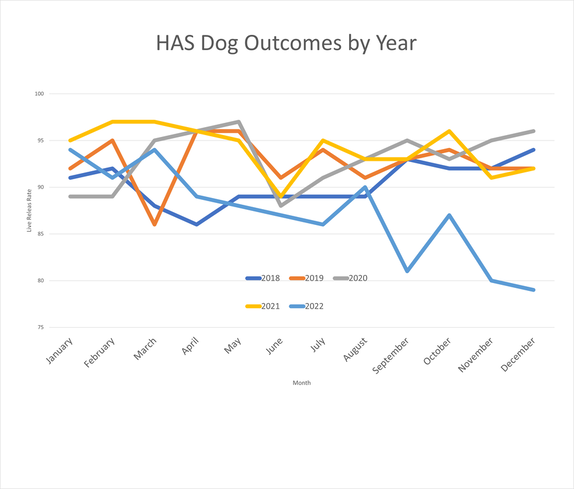
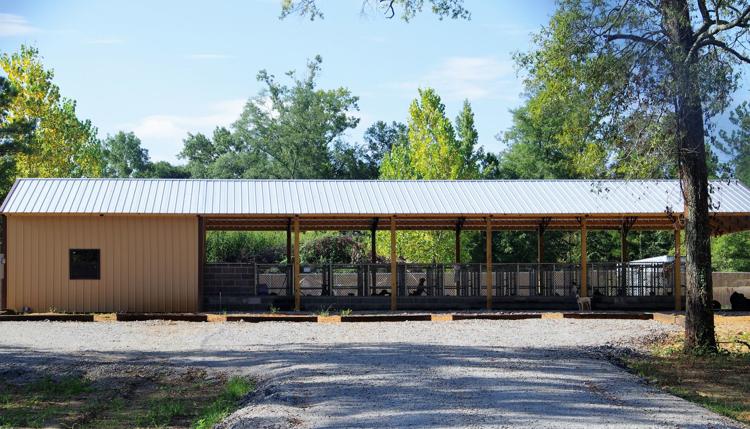
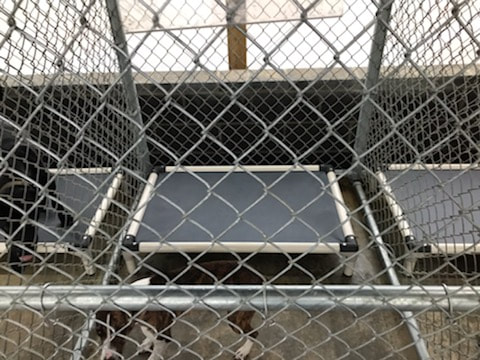
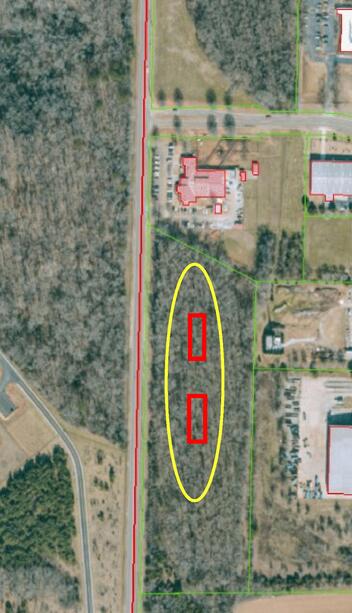
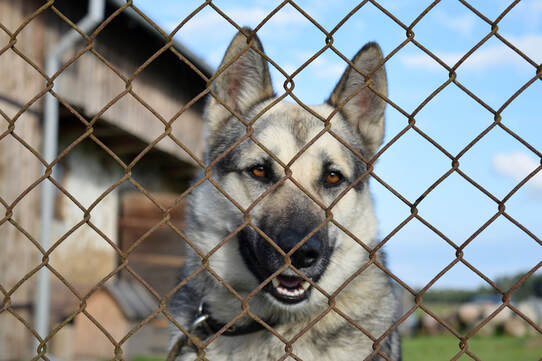

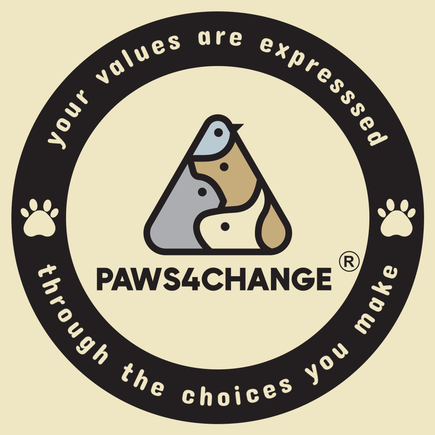


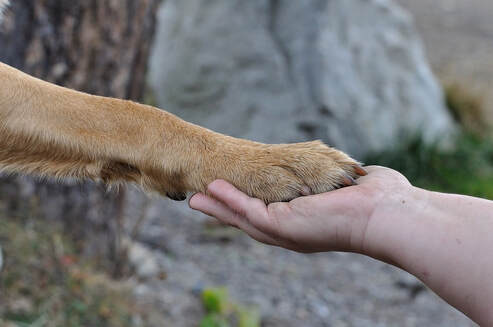


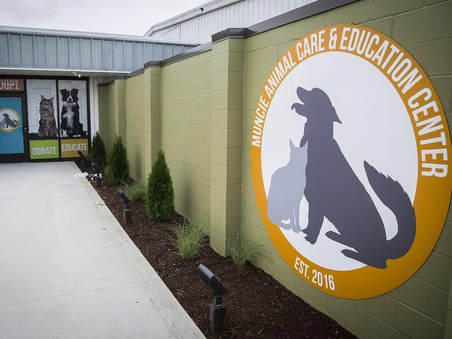

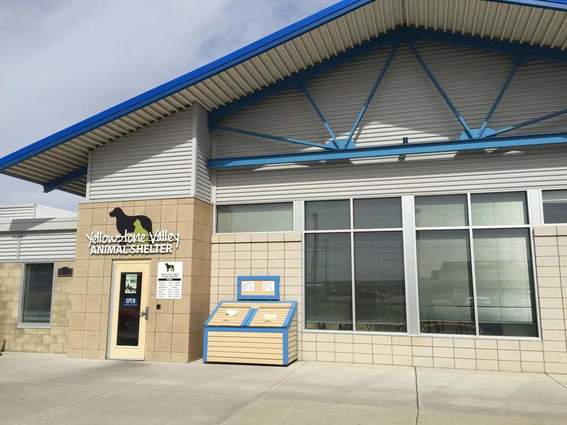

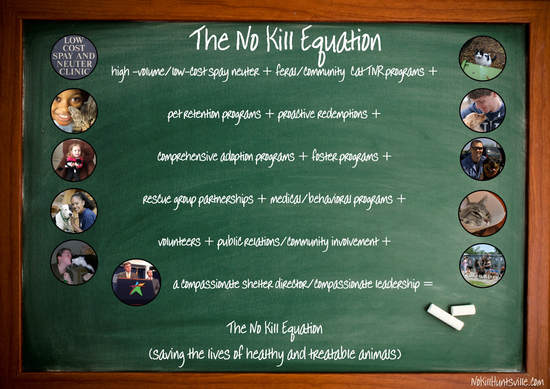

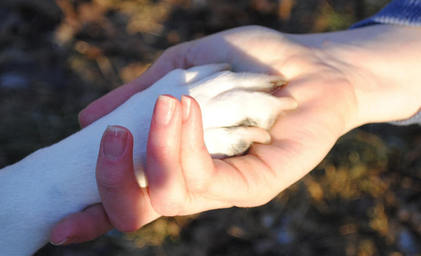
 RSS Feed
RSS Feed